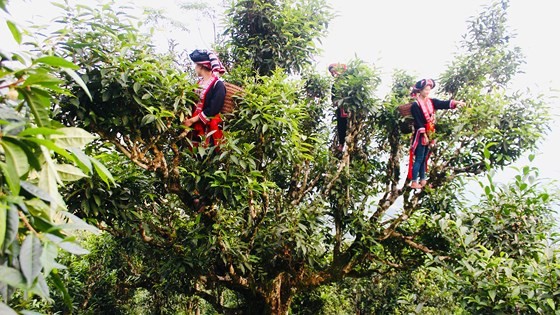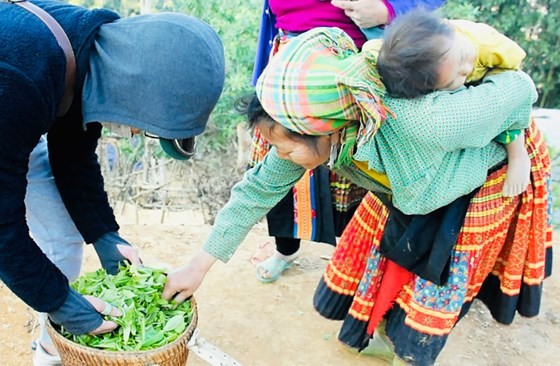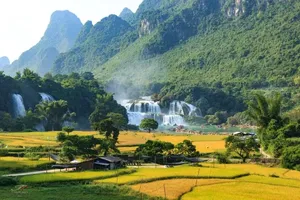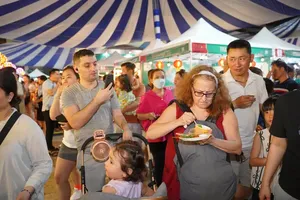
Mentioning Ta Xua, people immediately think of a high mountain area with fresh pure air and white cloud rolls stretching along paths when it is cold and humid. In recent years, Ta Xua has not only been well-known for the name of “Cloud heaven” but also rare valuable ancient tea trees.
Overcoming nearly vertical slopes, visitors follow a path to reach Be village, 12 kilometers far from Ta Xua town. The village is home to the most ancient tea trees in Ta Xua.
Alongside the half-done concrete road leading to the village, visitors can see lot of the tea trees taller than an adult. The tree trunks are scabrous and white mold colored with branches and foliage wide spreading.
Most of locals are H’Mong ethnic minority and they can speak Vietnamese language very fluently. When being asked about the age of the ancient tea trees, the oldest one in the village was confused. The age of the trees is not calculated by year but by generation. No one knows exactly how long the trees have been there.
The village patriarch regretfully told that few years ago when the electricity grid had not reached the village, locals cultivated corn and cassava crops yearound but they were still underfed. Without knowledge of the economic and cultural values of the ancient tea trees, they chopped down the trees to cultivate sweet potato. In the winter, they used dried tree trunks to set up fire to keep warm for human and cattle. Until some people came and asked to buy tea, they were aware of the tree value. But the number of chopped down tea trees has halved.
Returning to Ta Xua town to visit Mua A Khu, 32, a communal cadre who is the first man to do business from the tea trees.
 H’Mong ethnic people gather picked up tea leaves at a spot in Ta Xua town, Son La province
H’Mong ethnic people gather picked up tea leaves at a spot in Ta Xua town, Son La province
“I was born and grew up here amid undernourishment and poverty. Formerly, like other people, I did not know about the value of the tea trees until I had chance to work as a communal cadre and travel to the lowland to study. After meeting some plainsmen, I knew the great economic value of the ancient trees,” he told.
Afterwards, he together with some plainsmen sought ways to make tea products from the ancient trees, learning the way to pick up and dry tea leaves to keep the unique flavor of the tea leaves and teach locals.
Holding fresh tea leaves in his hands, Mr. Khu showed the difference between Ta Xua tea and tea in other regions. Ta Xua tea leaves are larger than others. On the tea buds is a layers of a smooth white fuzz called tuyet tra (tea snow). That why it is call Shan Tuyet tea. During processing, tea producers must be careful to prevent from destroying the valuable fuzz layer.
The ancient tea trees have brought locals stable employment. Everyday they pick up tea leaves in the mountain and sell to Mr. Khu for the earnings of VND300,000-600,000 a day.
Local man Mua A Ki said that he has transferred from farming into picking up tea leaves from the dawn to the sunset and earn VND300,000-500,000 a day. It might reach one million dong during peak season. That is a desirable income level to his family as formerly they could earn VND300,000 a month from farming production.
Asides from the tea leave picking income, Mr. Ki has got loans to build a wooden house near the town to showcase Ta Xua tea products and provide rooms for rent. Now his family has escaped years long poverty.
























